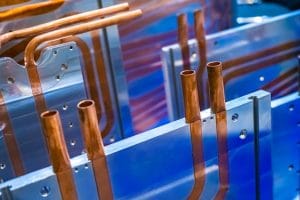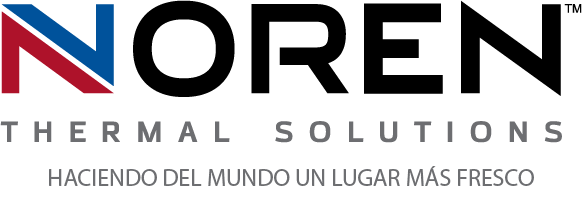 Dealing with electrical waste heat in an efficient and reliable manner has always been a significant concern for utilizing technology to its maximum potential. For companies in various industries that rely on different forms of technology to power most or all of their operations, that concern is an especially significant one. For their applications to continue running properly and maintain satisfactory efficiency, companies need effective thermal management solutions they can rely on. With the use of more natural and eco-friendly cooling processes, such as phase-change cooling, they can often ensure optimal electrical cooling for all of their technological applications.
Dealing with electrical waste heat in an efficient and reliable manner has always been a significant concern for utilizing technology to its maximum potential. For companies in various industries that rely on different forms of technology to power most or all of their operations, that concern is an especially significant one. For their applications to continue running properly and maintain satisfactory efficiency, companies need effective thermal management solutions they can rely on. With the use of more natural and eco-friendly cooling processes, such as phase-change cooling, they can often ensure optimal electrical cooling for all of their technological applications.
The utilization of natural heat transfer techniques
Phase-change cooling is one of several frequently used methods of transferring electrical waste heat. The trend toward more natural heat transfer processes has been growing over the last several decades, since heat exchangers were first introduced as an alternative method for cooling electrical enclosures. The popularity arises from the benefits that stem from streamlining thermal management and eliminating companies’ reliance on more cumbersome techniques, including air conditioning and air compression. This has allowed companies to significantly lower their overall costs of maintaining high-performance cooling, particularly those related to the amount of energy and frequency of maintenance required.
How phase-change electrical cooling works
The thermal management principles that power modern heat exchangers are based on natural processes and the properties of eco-friendly cooling fluids. For example, in phase-change cooling processes, the fluid absorbs waste heat until it evaporates (a point known as its latent heat of vaporization). At this point, the fluid becomes much less dense and is able to flow more efficiently through the heat exchanger unit. After releasing the heat within a cooler area of the unit, such as a custom-designed heat sink, the fluid condenses back into liquid and is able to continue absorbing and transferring waste heat.
Enhancing various thermal management processes
For many companies, the core thermal management need involves meeting the electrical cooling demands of their advanced technological applications. However, as heat exchangers and other advanced cooling solutions have continued to streamline thermal management, companies have found increasingly more ways to benefit from their advanced heat transfer techniques. These can include utilizing phase-change and other heat transfer cooling processes to make food and beverage processing more efficient and eco-friendly. For many companies, it also translates to reduced costs and enhanced efficiencies in processes such as wastewater treatment, and more.
For more information about how phase-change cooling enhances thermal management, call Noren Thermal Solutions in Taylor, TX, at 866-936-6736.







